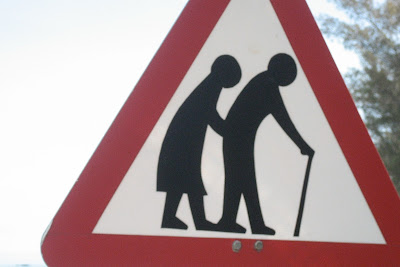Biogerontology
(the study of the biological aspects of aging) is a particular field of
research that is struggling for recognition by the scientific community as
a proper intellectual domain. One impeding factor is the difficulty to
separate this field of study from the “anti-aging” industry, which have
somewhat of a blemished history and tarnished reputation. Nevertheless,
biogerontology has
slowly started to become more accepted and, in parallel, the interest
in age-related research has started to boom. So if these scientists are
not just producing anti-aging products, what are they doing?
The Puzzling Questions
Separating the anti-aging industry from the work of a biogerontologist is difficult, mainly because they are trying to achieve similar ends. However, for a biogerontologist, the focus is to understand what aging is (a solid definition is still lacking) as well as to understand the aging process. Ultimately, their goal is to alter the degenerative process of aging and thus to keep people healthy and fully functional up until the time of death [1].
The intriguing thing about biogerontology is that the most basic questions still remain unanswered. As such, it is a field of study where possible breakthroughs may lurk in the distance. One fascinating question includes why some species in general live longer than others (reference inter-species aging article?). Getting old is a universal across all species, yet horses generally live longer than rats but have shorter lives than humans. Aging affects species in a similar fashion, such as losing hair and muscle tone, getting age-related diseases etc. Yet, these happen at a differential rate across species. We still do not know why this is the case [1].
 |
| The “supermodel” of age research – the naked mole rat Picture source: http://bit.ly/1n4aVZa |
What are They Working On?
When it comes to investigating the lifespan, biogerontologists have often turned to genetics. Several genetic pro-longevity mutations have been identified by the usage of model organisms such as yeast, fruit flies and mice. Most of the identified genes are involved in aspects specific to evolution, including growth regulation, energy and reproduction.
NAKED MOLE RATS LIVE 10 TIMES LONGER THAN NORMAL LAB RATS
Apart from genetics, specific prominent models have emerged. One model that especially has attracted attention is the so-called “Naked mole rat” – also known as the “supermodel” of age research. The mouse-sized rat is normally found in the horn of Africa and has a marvelous lifespan of 30 years (!), as compared to the average 3 years of a normal lab rat [2]. Its long life span has been linked to its good health and cancer resistance. So obviously some processes have evolved in these species that allow them to stay fit for such a long time in comparison to a lab rat. Surprisingly enough, these rats exhibit high levels of oxidative stress and short telomeres – findings usually linked to an accelerated aging process. Yet, despite this, they still cope well with cellular stressors and show stable genetic integrity. The mechanism of how they are able to do this still remains a mystery [3].
Any Breakthroughs Yet?
There is still a lot which remains to be discovered. Yet, one major finding in aging research is that dietary restriction (under-feeding with a 30-40% reduction in calories, without malnutrition) extends life in both nematodes, spiders and dogs. The idea that life is prolonged during times of less food is thought to serve as an evolutionary advantage, as this enables animals to postpone reproduction until food is available. The underlying mechanism is unclear, yet the hypothesis is that decreased caloric intake slows down metabolic activity, thus reducing the production of toxic reactive oxygen species and ultimately the aging process [4,5].
CALORIC RESTRITION EXTENDS LIFE IN DOGS, SPIDERS AND
NEMATODES
Can We Extend Life?
Biogerontologists do find that different genes/pathway/processes are involved in the aging process when investigating different species. Despite this, translational approaches are challenging as aging processes, while bearing similarities across species (e.g. the effect of dietary restriction), also substantially differ from one another (naked mole rat vs a lab rat). This brings us to the general problem of translating preclinical findings into something useful in the clinics. Considering that we still need to understand the basic mechanism of aging, there is a long way to go before eternal life is possible. We will all eventually “suffer” from getting old. Yet, who knows? Given the increased interest in biogerontology, aging might with time (ironically) become a process which, to some extent, can be postponed or at least improved.
[1] Settersen et al., J Aging Stud, 2008
[2] Sengupta, Int J Prevent Med, 2013
[3] Edrey et al., ILAR J, 2011
[4] Guarente & Kenyon, Nature, 2000
[5] Vijg & Campisi, Nature, 2008
by Henriette Edemann Callesen, PhD student AG C.Winter
this ariticle originally appeared in CNS Volume 9, Issue 1, The Aging Brain

